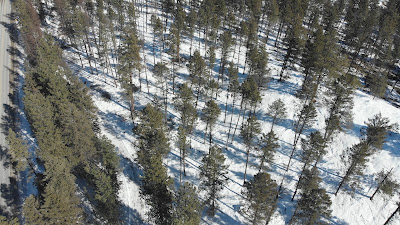B.C Government Professional Reliance Review: Our Submission
The Provincial Government
recently requested public input on the question of “Professional Reliance.”
We provided a response and
published it together with a response by Dr Brian Horejsi of Speak Up For Wildlife Foundation. See the full
submissions: here
In our view Professional Reliance
has been increasingly used to off-load Governments oversight of public resources and has resulted in a
handover of resources to proponents and those developing or exploiting resources, effectively enabling
industry to dictate conditions affecting public resources.
While Government has defended the
PR model, together with so-called “Results Based” oversight, some of the more
egregious examples of failure of the model, Shawnigan Lake,Mount Polley, will continue to
demonstrate the problems inherent in the model.
The model also distances the
public from engagement with processes having an effect on public assets, enables proponents to
limit information provided, based (for example) on spurious claims of withholding
“proprietary” information, and enables proponents to effectively control public input or concerns. The
latter being the transfer of responsibility of public hearings to proponents while Government removes
itself from the process.
While the myth that PR can
effectively represent the public interest is propagated by Government and proponents. It is
the opinion of this writer:
that professionals employed by or contracted by proponents have an inherent conflict of interest and that to a greater or lesser degree
can be expected to prioritize the interests of their employer/agency, over the public
interest.
Given the expectations of proponents, their
ability to dictate Terms of Reference, devote or withhold resources or information and their
ability to control and edit information, an essential bias in favor of the proponent’s interests is
inevitable. When you add the weight of the
control proponents have over the future advancement, re-employment prospects of
the professionals involved, some degree of bias
is a natural, predictable and inevitable outcome.
What checks and balances are in
place to counter such bias? Increasingly, nothing effective, but a disingenuous claim by
Government that critics of PR should take their case to the Professionals Regulatory Bodies.
(See BC Auditor report and concerns re Mount Polley where Government replied to the
criticisms by suggesting that, “concern about over reliance on qualified professionals is a
criticism of professional body’s ability to regulate their professions.”)
Government is suggesting that it is the responsibility of professional bodies to maintain some mythical level of objectivity that will maintain the public interest, while being well aware that regulation within professions is a moveable attempt to mostly control the ways in which professionals should avoid "stepping on each other". This has resulted in various efforts by professions to silence, punish or remove members who have "in their professional actions" taken issue with another professional. So much for expectations of objectivity.
Extract from Dr Brian Horejsis’s
comments:
“Each and every
corporation, company, commercial entity, individual and/or association that
is engaged in the use of or exploitation of public “resources”, (land, water,
forests, wildlife, fish and birds) must be subject to scrutiny and regulatory
oversight by an accountable, structured, disciplined and supervised Public
Service Ministry.”
If any reader thinks the Forest
Practices Board (FPB) could presently fill that role, we add Dr Horejsi’s comment on the FPB as follows:
“The Forest
Practices Board of today is an offshoot of the Professional Reliance
revolution. It was born to
provide technical analysis of the consequences of Public Service and Ministry
behavior but was designed deliberately to be
neutered of regulatory authority.
While it
produces report upon report of Ministry failures and land user misconduct, it
remains but a pimple on the chin of the
Ministry of FLNRO, and continues dutifully to have no material bearing
on the actions of commercial and corporate land users.”
We would note that a former Chair
of the FPB has proposed that the FPB should be the entity to do the oversight
in a variety of areas. Other recent public comment has proposed that the FPB
should provide oversight of Oil and Gas production.
In our opinion the FPB as
presently structured does not and can not provide meaningful oversight for the
reasons noted above by Dr Horejsi (highlights by us) and we have a number of
personal experiences that confirm those concerns.
It is unlikely that some
“restructuring” of the FPB would result in the necessary regulatory oversight
needed.
We propose a completely new
structure.
To read the full submissions here



